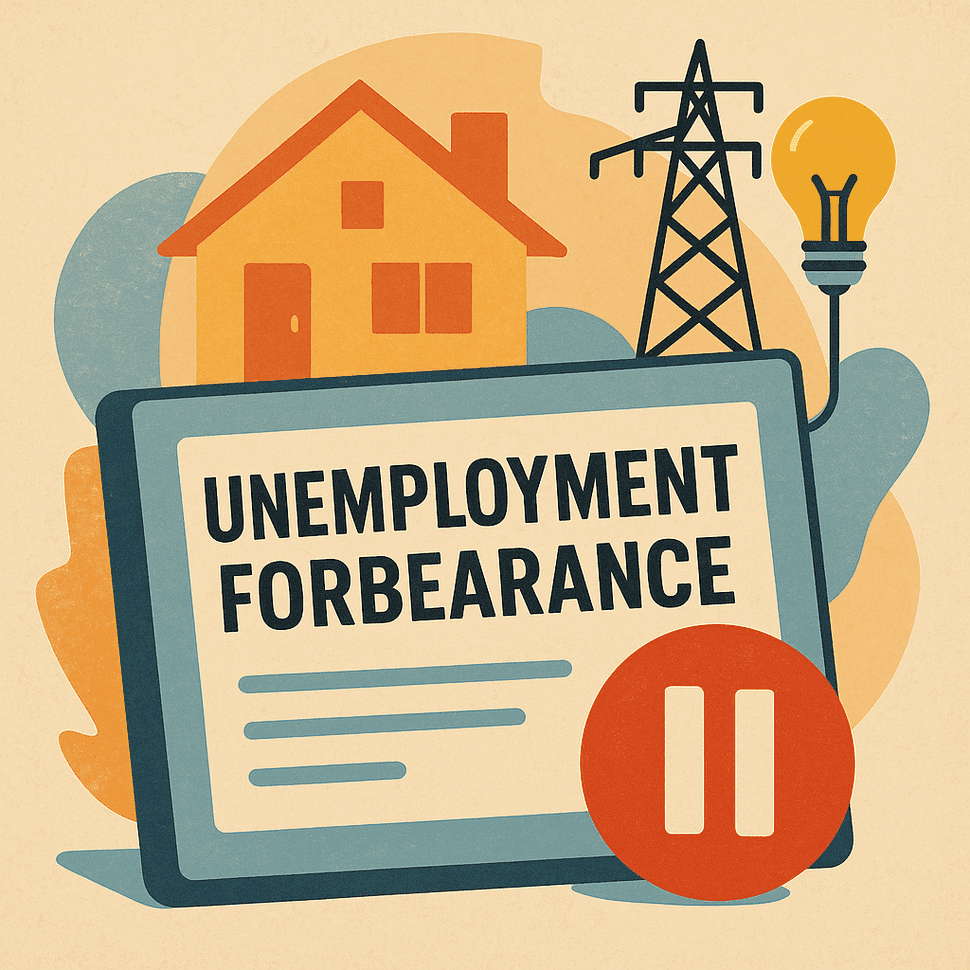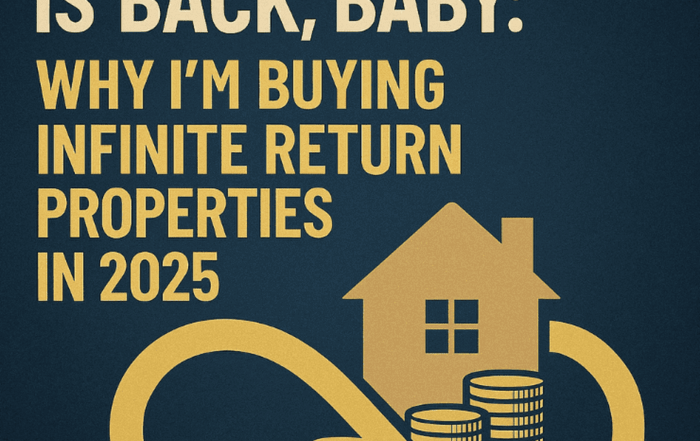So, What If You Could Pause Foreclosure?
As an investor, you’ve probably had a deal fall apart because the seller ran out of time. Maybe the house was great, numbers made sense, but boom—foreclosure date hits, and you’re locked out.
What if I told you there’s a “pause” button for situations like that? It’s called unemployment forbearance—and if used smartly, it can buy time for the seller, room for you to negotiate, and space to structure a win-win deal.
Let’s break it down like you’re explaining it to your teenage nephew while also juggling a walkthrough, title delay, and two contractor bids.
1. What Is Unemployment Forbearance (In English)?
When someone loses their job and can’t make their mortgage payment, they can apply for unemployment forbearance. That means:
-
The bank pauses collection efforts (usually 6 months, sometimes extendable to 12).
-
No foreclosure notices during that time.
-
Payments are delayed—not erased. The missed amount either gets added to the loan, pushed to the back, or capitalized.
It’s like telling the bank: “Chill. I lost my job. I’m not ghosting you—I just need time.”
2. Why Should Investors Care?
Because it gives you leverage and time. Here’s what you gain:
-
No competition from foreclosure auctions.
-
Ability to list the property or do walkthroughs while utilities are still on.
-
Time to structure Subject-To, short sale, or a traditional closing.
-
Chance to make a lower offer in exchange for fast, hassle-free execution.
Think of it as a temporary cease-fire between the bank and the borrower—and you get to sneak in and make peace with everyone.
3. Story Time: “Lisa and the Clean, Cold House”
Lisa was a waitress who got laid off. Her house was 2 months behind. No one wanted to touch it because “foreclosure’s coming.” Except… it wasn’t. She had been approved for forbearance, and the loan had just switched servicers—giving us a built-in 60-day freeze.
She moved out but kept the electricity on (legend status). The house showed well, numbers made sense, and we had time to offer a realistic number—not a panic-fueled one.
We closed. She avoided foreclosure. We got the asset with no sheriff, no screaming, no weird smells. Success.
4. The Widow Who Thought It Was Over
Now this next one really hit home.
A woman—let’s call her Marisol—called us in tears. Her husband had passed away unexpectedly. She had lost her job, missed six payments, and was days away from foreclosure. She was alone, overwhelmed, and ready to dump the property for anything she could get.
But I said, “Before we talk numbers, let’s talk strategy.”
I walked her through applying for forbearance, helped her gather documentation, and encouraged her to speak directly with the bank.
She called back a week later. Approved.
The foreclosure process stopped cold. That gave us the space to prepare the house, get it listed at retail, and market it properly. Now she’s on track to walk away with equity—not debt collectors on her heels.
That’s the power of using the clock smartly.
5. How to Spot Sellers Who Need This
You’re not going to see a Zillow tag that says “I’m unemployed and behind on my mortgage.” You’ve got to dig.
Ask:
-
“Have you or your spouse lost your job recently?”
-
“Are you getting unemployment benefits?”
-
“Have you asked your lender about forbearance?”
-
“Is foreclosure already scheduled?”
If they say “yes” to the first two and “no” to the last one, you’re in business.
6. Help Them Apply (The Right Way)
If they haven’t applied yet, guide them. Here’s the quick script:
“Call your lender’s hardship or loss mitigation department. Tell them you lost your job and want to request unemployment forbearance. You may need to submit your unemployment claim, a brief hardship letter, and maybe a copy of your ID.”
It’s not rocket science—it’s red tape. And you can help cut through it.
7. What the Bank Will Do
Depending on the loan type:
-
Fannie Mae, Freddie Mac, and FHA loans typically offer 6 months, with extensions to 12 months.
-
They may:
-
Add missed payments to the back of the loan
-
Extend the loan term (e.g., 30 years becomes 40)
-
Offer a loan mod with a slightly higher balance
-
Either way, it stops foreclosure cold, and gives you your window.
8. Investor Strategy in That Window
Now that you’ve got 30–60+ days (or more), here’s what you do:
-
Walk the property
-
Run comps
-
Secure funding or partners
-
Make a fair offer—based on today’s reality, not foreclosure fear
-
If needed, list it for them (yes, sometimes that’s the best play)
You’ll find that people who feel safe make better decisions, and that gives you more clarity and control.
9. How to Structure the Offer
Here’s your line:
“Look, the bank’s not knocking right now because you’ve got forbearance. That gives us time to get this done right. I can offer X, close fast, and take the pressure off. No foreclosure. No fire sale. Just a clean deal.”
Simple. Calm. Respectful. Professional.
10. What to Watch Out For
This ain’t fairy dust. Here’s the reality check:
-
The clock restarts after forbearance ends—be ready to close or pivot.
-
Servicers vary—some are helpful, some act like they’re allergic to customer service.
-
Payoff balances can change—interest accrues, sometimes faster than you expect.
-
You still need title, insurance, etc.—so don’t cut corners.
This is just a tool. Not a pass to get lazy.
11. Exit Strategies That Work
Here’s how we’ve made this play profitable:
-
Subject-To: We take over payments after forbearance ends (especially if the seller wants to walk).
-
Short Sale: If there’s no equity, we negotiate with the lender during the paused period.
-
Retail Listing: When the house is clean and presentable, a full listing gives the seller and us the most profit.
-
Fix & Flip: The pause gives you time to close clean and get started before contractors are twiddling thumbs.
Just make sure your strategy matches the seller’s goals—and the timeline you’re working with.
12. Checklist for Your Team
Here’s your investor-ready checklist:
-
✅ Confirm unemployment status
-
✅ Check if forbearance is active or possible
-
✅ Review number of months behind
-
✅ Ask for lender name and contact
-
✅ Get a payoff letter if possible
-
✅ Walk property
-
✅ Run comps
-
✅ Structure your exit plan
-
✅ Write and present your offer
-
✅ Move fast but respectfully
That’s how we build momentum, not just offers.
13. The Humor Break You Deserve
Let me just say—helping a homeowner apply for forbearance over speakerphone while standing in their living room surrounded by cat statues and unopened mail? That’s a real moment.
I’ve seen everything from baby goats in the backyard to sellers handing over keys with tears in their eyes and a thank-you pie in their hands. (Yes, it was apple. Yes, I ate it.)
Point is—this business is messy, emotional, and full of surprises. But strategies like this one help bring structure to chaos. And a little laughter never hurts either.
Final Thoughts
You’re not just buying houses. You’re solving problems, giving people options, and using tools like unemployment forbearance to slow down time, reduce pressure, and build better deals.
This isn’t a one-off technique. You can use this over and over again:
-
With motivated sellers
-
With distressed homeowners
-
With your acquisition team as a value-added pitch
Keep it consistent, stay patient, stay true—if I did it, so can you! Ready to connect and strategize?
Contact me at http://graystoneig.com/ceo
– Jorge Vazquez, CEO of Graystone Investment Group & Coach at Property Profit Academy

Pick your expert. Book your free 15-minute consult now. We are here to help!
Our Top Articles
Here’s How to Get Assignment Fees Financed (Even When Lenders Push Back)
Agents, Want Bigger Checks? Here’s How to Get Assignment Fees Financed (Even When Lenders Push Back) If you’re a [...]
Florida’s Not Crashing—It’s Resetting: Why This Market Is Still a Goldmine for Smart Investors
The so-called "decline" in Florida’s housing market is nothing like 2008. Back then, we were dealing [...]
Subject-To Is Back, Baby: Why I’m Buying Infinite Return Properties in 2025
Subject-To Is Back, Baby: Why I'm Buying Infinite Return Properties in 2025 It’s crazy the [...]
Property Profit Academy:
✔ Learn to buy properties with little to no money down.
✔ Build a $10M portfolio step by step.
✔ Master strategies like BRRRR and house hacking.








